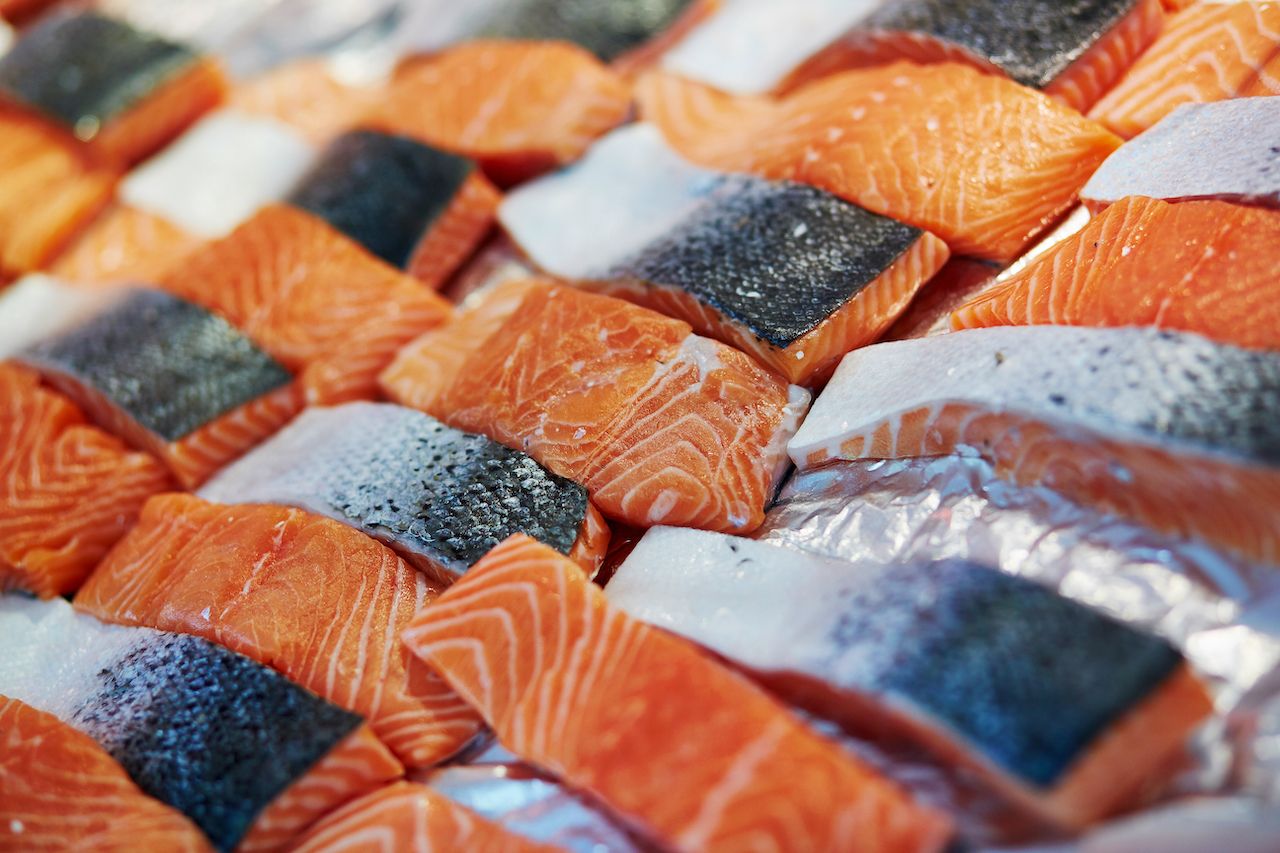Is Salmon the Problem?
Option 1:
Is salmon as sustainable as we might think? The short answer is no, however, there are solutions that can reduce the number of negative impacts that salmon has on the environment. For starters, the salmon you buy matters. There are two types of salmon, wild salmon, and farmed salmon. Wild salmon is salmon "caught in their natural environment" (Byran, 2022), and farmed salmon is salmon kept in "netted pens" (Byran, 2022) and controlled by farmers. While eating farmed salmon might seem sustainable because it takes away the possibility of overfishing, farmed salmon poses several threats to the environment. Farmed salmon kept in nets that are tightly packed causes bacterial disease to be easily transmitted. In order to help the salmon those farmers give the salmon antibiotics and pesticides which can have a negative impact on the surrounding water. Farmed salmon also can escape their nets and get into the wild and spread disease. While this might seem overwhelming and make you think there are no solutions to improve the environmental impacts of salmon there are in fact actions that can be taken so that salmon doesn't impact the environment as harshly.
On a local scale, there are also actions that can be taken to improve the environmental impacts associated with salmon. You have the decision when you go to the grocery store as to what type of salmon you purchase. Knowing the negative environmental impacts that are associated with farm-raised salmon choosing to buy wild salmon helps support a healthy salmon population and the health of the environment. There are a few limitations to supporting these wild salmon fisheries, such as wild salmon can be expensive. Another limitation of buying wild salmon is that it can lead to overfishing. Since there is an increase in demand for protein such as salmon fisheries are wanting to capture as many fish as they can.
Another thing we should be concerned with when it comes to salmon is the use of plastic. The video "Battle of the Bag" talked a lot about the issue of plastic bags and how plastic bags are a worldwide problem. We see plastic all over and salmon is mainly packaged in plastic. The plastic that the salmon is wrapped in will most likely end up in a landfill harming the environment.
References




Comments
Post a Comment